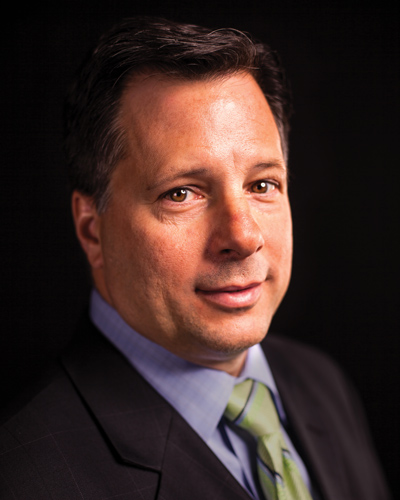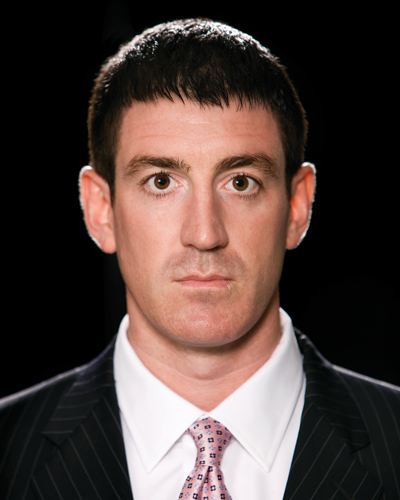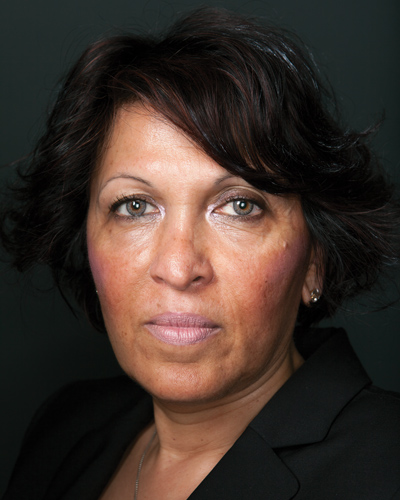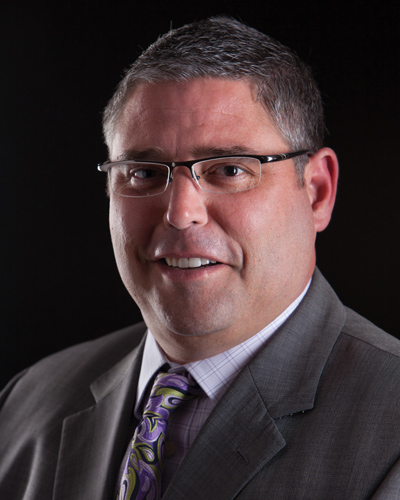David Goldfarb
President, DSG Benefits Group, Dallas

Much of David Goldfarb's business is based onconsumer-driven health plans with a large focus on health savingsaccounts. Too often, employees don't truly understand how theirbenefits work. While these employees might be enrolled in theiremployers' plans, they're not taking full advantage of what theirbenefits can offer, says the president of DSG Benefits Group in Dallas.
|“Employee benefits are an organization's second largestexpenditure behind payroll,” Goldfarb says. “It's a big, big ticketitem. Depending on the type or size of the group, it can be a six-to nine-figure expenditure, and you don't want to be spending thatmuch if the employees don't even understand the benefits, don'tappreciate the benefits and don't know how to use thebenefits.”
|Considering the lack of employees' understanding of their benefits, Goldfarbbelieves health savings accounts are helpful because they requireemployees to become involved with their own health care decisions.HSAs require employees to make conscience consumer decisionsregarding their health care, which encourages them to do moreresearch and compare prices.
|“If I have to pay the first $3,000, I'm going to do a lot moreshopping around,” Goldfarb says. “Even with prescriptions, I'mgoing to look at generics or ask for samples. Think about whenyou're buying a TV. There aren't a lot of people who just walk intoBest Buy and buy a $5,000 plasma TV on the spot.”
|When an HSA is paired with a wellness program that focuses on potential risk factors, it iseven more effective, Goldfarb says. Often, it's difficult todetermine the return on investment when it comes to wellnessprograms. An employer can implement fitness challenges and bring inpersonal trainers, but that doesn't help the employer understandwhere the immediate risk factors are.
|“If you see your 500- or 1,000-person group has a bunch ofpotential diabetics or potential obesity problems, you can puttogether wellness programs that specifically address those issues.You can determine the risk factors through biometric screenings ora simple health risk assessment, which costs nothing. Use the datato build a plan that is all about prevention because 70 percent ofchronic diseases are preventable.”
|To provide value to his clients, Goldfarb is dedicated tostaying on top of the industry's latest news, particularly when itcomes to health care reform. Both employers and employees struggleto keep up with the ongoing changes that have come with health carereform, and they need their brokers to guide them through thisrevolving regulatory environment.
|“Every company is different,” he says. “More so than ever, youreally need to know what you're doing, and you need to have a verystrong understanding of implications of the Affordable Care Act.Obviously, there are some unknowns, but in order to give goodadvice, you really need to be following things on a dailybasis.”
|Photo by Jim Olvera
||Joe Milano
Area vice president, Gallagher Benefit Services, Itasca,Ill.
 Joe Milano, area vice president of Gallagher Benefit Services in Itasca, Ill., spends much of histime creating health management solutions with clients. As medicalcare costs continue to climb, many of Milano's clients are lookingfor ways to better manage their health care plans and encourage aclimate of employee engagement. Creating this type of environmentincludes many hours of financial modeling, working on plan designsand drawing from analytics, but it goes beyond the technicalside.
Joe Milano, area vice president of Gallagher Benefit Services in Itasca, Ill., spends much of histime creating health management solutions with clients. As medicalcare costs continue to climb, many of Milano's clients are lookingfor ways to better manage their health care plans and encourage aclimate of employee engagement. Creating this type of environmentincludes many hours of financial modeling, working on plan designsand drawing from analytics, but it goes beyond the technicalside.Effective communication is especially important as a broker whenit comes to employee engagement, Milano says. Employees oftenremain hesitant to buy into their employers' benefits strategies,and brokers have to be ready to help them better understand theirplans in order to find a sustainable solution.
|“There's an inherent distrust in the employee-to-employerrelationship,” Milano says. “We try to impress upon our clientsthat if you develop a trust with your employees and share in boththe good and bad times, you're going to have a more engaged workforce, which will help grow your business.”
|When creating a communication strategy, Milano includes multiplemethods. Email is great for some people, but others might learnbetter through face-to-face meetings. Learning styles range fromindividual to individual, and it takes more than one communicationstrategy to reach an entire employee population.
|“You have to attack communication in every way you can,” Milanosays. “Everyone learns differently and takes in informationdifferently. There's no one way that works for everybody.”
|To get employees engaged in their own health, Milano says hefinds premium differentials seem to work best for his clients.Rather than continuing to follow poorhealth habits, premium differentials incentivize good behaviorwith monetary rewards, which can be especially appealing in today'seconomy.
|“Just changing plan designs doesn't work,” he says. “It mightshift the cost, but it doesn't shift the cost of care becauseemployees are still getting sick and not taking care of themselves,so we're trying to affect behavior.”
|When creating plan designs, it's important brokers help clientssee what the environment could look like in the near future, Milanosays. Questions might still loom, but it's the broker's job to helpclients determine the best path to sustainability.
|“If you don't have a plan in place and make your plan agileenough that you can move it as things change in your business,you're not going to succeed,” Milano says. “I try to really paintthe picture for what the future could look like for my clients—withand without changes. You have to have the dialogue that looks atthe bigger picture several years down the road.”
|Photo by Colin Lenton
||Brandon Scarborough
Co-founder, Power Group Cos., Overland Park, Kan.

When it comes to enrollment, Brandon Scarborough, co-founder ofPower Group worksite division and PowerEnroll at Power GroupCos. in Overland Park, Kan., has his hands full. Much ofScarborough's time is spent setting up the enrollment, working withthe carriers and implementing the proper technology. Despite hismany responsibilities, ensuring enrollment conditions are justright for employees is the most difficult aspect of his job butcritical to engagement, he says.
|“Getting people to call in and enroll in their benefits is anextreme challenge,” Scarborough says. “You need buy-in from theemployers, and you have to have strong communication so theemployees understand what's being offered. It's your job as abroker to make sure those conditions are right.”
|Voluntary benefits are also a large component of Scarborough'sbusiness, and he sees the various ancillary products as an areathat's undergoing growth in the industry. With the health care exchange system scheduled to take effect in 2014,Scarborough believes more employers will look at voluntary benefitsas another option.
|“With the health care exchanges and everything that's going onwith health care reform, voluntary benefits are going to be a muchbigger part of an employer's overall benefit package,” he says.“They are going to be much more important than they were. Voluntarybenefits are still important now, but I think there's going to be amuch bigger focus on them going forward, just because of what theexchanges are going to bring up. Right now is the time to be in thevoluntary industry.”
|In Scarborough's experience, group worksite voluntary products,including accident policies and critical illness insurance, are becoming especially popular.When worksite voluntary products first hit the scene, they emergedas individual policies, but more carriers are beginning to offerthem as a group plan.
|“Accident policies and critical illness are the big buzz in theindustry right now because they're the newest products and peopleare moving toward group critical illness, which makes it to whereyou don't have to get licensed in every state to be able to enrollit,” Scarborough says. “So those have been pretty popular.”
|For Scarborough, the appeal of the benefits industry centers onthe opportunity to help a wide range of clients. Whether a group issmall or large, Scarborough can help that client find a plan thatfits best for its unique needs.
|“I love the flexibility and being able to work in any industrythat you want,” Scarborough says. “Everybody is a potential clientto me. I like the fact that I can go out and find any size or anyindustry can go out and be a potential client. It's just your jobto go out and make them your client and make the sale.”
|Photo by Austin Walsh
||Rina Tikia
President, Tikia Consulting, Metairie, La.
 As questions continue to loom around health reform and itsfuture remains uncertain, Rina Tikia, president of Tikia Consultingin Metairie, La., understands that her clients need aknowledgeable, dedicated partner more than ever. Leaving the officeat 7 or 8 p.m. is not uncommon for her, she says, and clients arewelcome to call her any time, whether that happens to be during alate night or weekend.
As questions continue to loom around health reform and itsfuture remains uncertain, Rina Tikia, president of Tikia Consultingin Metairie, La., understands that her clients need aknowledgeable, dedicated partner more than ever. Leaving the officeat 7 or 8 p.m. is not uncommon for her, she says, and clients arewelcome to call her any time, whether that happens to be during alate night or weekend.“To be successful in this profession, you have to be verydedicated and have a good attitude,” Tikia says. “I'm available24-7. I have never lost a client due to poor service.”
|Of course, considering the ever-changing benefits environment,Tikia strives to stay current on all regulations and industry news.While there always seems to be a learning curve, brokers can'tafford to become complacent when it comes to knowledge, she says.Employers still have a lot of questions surrounding benefits inrelation to health reform, and they rely upon their brokers todesign the most effective plan that is compliant with all currentregulations.
|“You can never say you know it all because it's constantly changing,” Tikia says. “There's never a dull moment,but you have to stay on top of the industry. I'm always trying tolearn more, and one of my biggest strengths is I'm very creative. Ialways think outside the box.”
|Part of Tikia's creative approach includes incorporatingself-funded plans, even for smaller employers, she says. Inparticular, adding dental offerings to the self-funded plans hasbeen helpful for Tikia's clients. Unlike medical claims, dentalclaims are never catastrophic in nature, which makes it affordablefor employers, and including that extra benefit is attractive toemployees.
|“Self-funding not only helps the employer reduce its costsbecause you're only paying as you go, but it's also a good offsetto employees in terms of a benefits package,” Tikia says. “You'llnever have a million-dollar claim in dental.”
|Although the future of health reform is still unknown, Tikiaremains positive about the future. Traditional health care might bechanging, but she says there are many other ways brokers can helptheir clients find the right solutions. New health care-relatedoptions are continuing to become more prevalent, and it just takesa little creativity and hard work to find the plan that fits.
|“I'm very optimistic,” Tikia says. “There are so many types ofofferings you can do besides just health care. You have yourvoluntary products, you have your worksite products, you have yourself-funded plans, and you have your ACOs. There are so many other avenues to explore.”
|Photo by Daymon Gardner
||Brian Ward
Managing director of investments, Ward Financial AdvisoryGroup, Nashville, Tenn
 For Brian Ward, managing director of investments at Ward FinancialAdvisory Group of WellsFargo in Nashville, Tenn., the mainattraction of working in employee benefits stemmed from his strongentrepreneurial spirit and the industry's revolving and strategicnature. Ward wanted to make a difference in people's lives, and thebenefits industry offered just that opportunity.
For Brian Ward, managing director of investments at Ward FinancialAdvisory Group of WellsFargo in Nashville, Tenn., the mainattraction of working in employee benefits stemmed from his strongentrepreneurial spirit and the industry's revolving and strategicnature. Ward wanted to make a difference in people's lives, and thebenefits industry offered just that opportunity.“I help clients achieve goals by what I call the benefit bangfor their buck,” Ward says. “I love the challenge of creatingunique life solutions and helping clients understand the ease ofuse of their benefits. A lot of this is difficult for people tounderstand, so we help our clients implement programs by educatingtheir employees.”
|To help employees better understand their benefits, Ward, who isresponsible for roughly 250,000 lives, focuses on employeeengagement, and that starts with interactive education. Betweentraditional medical plans, consumer-driven health plans, ancillaryproducts and all other types of benefits, there's a lot ofinformation for employees to keep straight.
|For instance, when it comes to retirement, the old philosophyencouraged employees to save to their matches. However, the mostcommon 401(k) match is 50 cents to $1 up to 6 percent for anincome, when it's recommended that employees put away 12 percent to14 percent of their salaries during their working years to have anincome replacement ratio of 70 percent to 80 percent.
|“Your company may be willing to help you, but you have to domore to get to where you need to go,” Ward says. “You have to holdemployees accountable. That doesn't mean slap their hands but givethem the education and show them that it's a two-way street. Theyalso have to pull the rope.”
|Transparency also plays a major factor in Ward's businessphilosophy. In this uncertain economic climate, employers arestruggling to reinvest in their resources and stay competitive byattracting and retaining employees. To remain strong, employersmust make the right benefits choices and fully understand theproducts they offer.
|“Transparency is really something we've been focusing on for thelast seven years,” Ward says. “Rather than just selling yourclients a product that they don't know about, you need to help themunderstand what they're paying for, the products' pros and cons,and how the plans work. Let's talk about everything openly in apartnership to get where we need to go.”
|Transparency is an especially important component of hisbusiness model, given the unknown future of health reform, he says.Many HR departments are overburdened in today's businessenvironment and need their brokers to act as trustworthy,knowledgeable partners, which is a role Ward embraces.
|“I find it personally rewarding to know at the end of the day weare helping people and truly helping those people attain lifelonghopes and dreams for themselves and their loved ones,” Ward says.“That's important, and our clients appreciate knowing we care aboutthem as people. I take my responsibility seriously because whenyou're working with such a broad client base, you're affecting alot of people's lives.”
|Photo by Jeff Frazier
Complete your profile to continue reading and get FREE access to BenefitsPRO, part of your ALM digital membership.
Your access to unlimited BenefitsPRO content isn’t changing.
Once you are an ALM digital member, you’ll receive:
- Critical BenefitsPRO information including cutting edge post-reform success strategies, access to educational webcasts and videos, resources from industry leaders, and informative Newsletters.
- Exclusive discounts on ALM, BenefitsPRO magazine and BenefitsPRO.com events
- Access to other award-winning ALM websites including ThinkAdvisor.com and Law.com
Already have an account? Sign In
© 2024 ALM Global, LLC, All Rights Reserved. Request academic re-use from www.copyright.com. All other uses, submit a request to [email protected]. For more information visit Asset & Logo Licensing.








